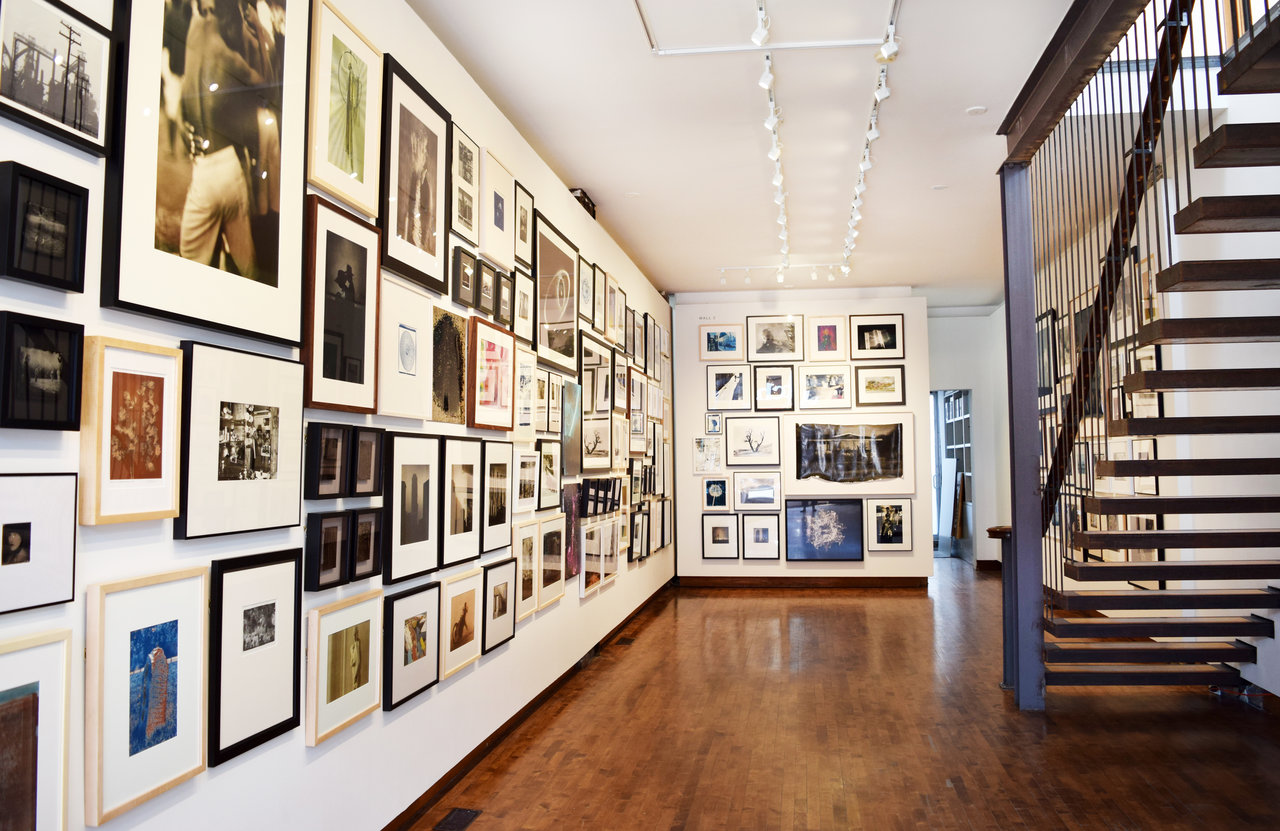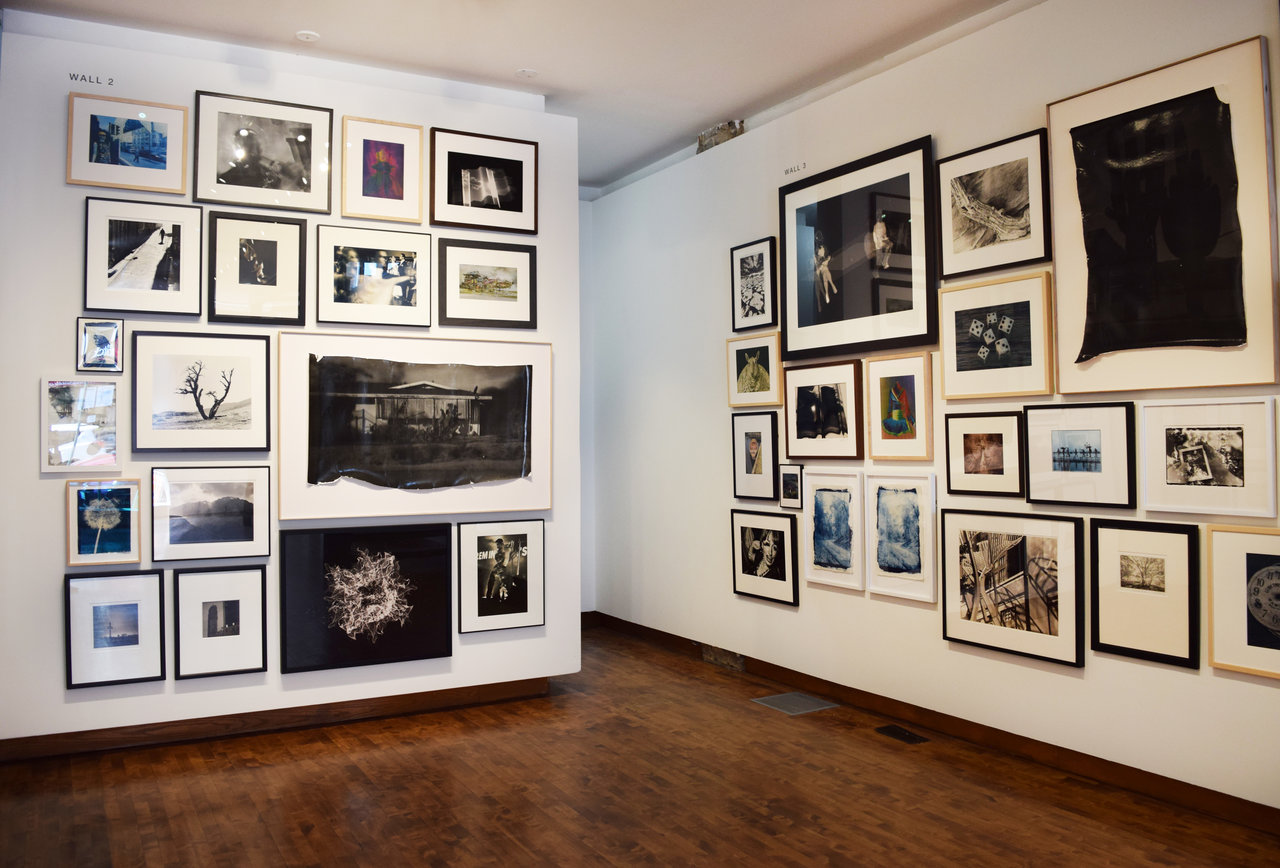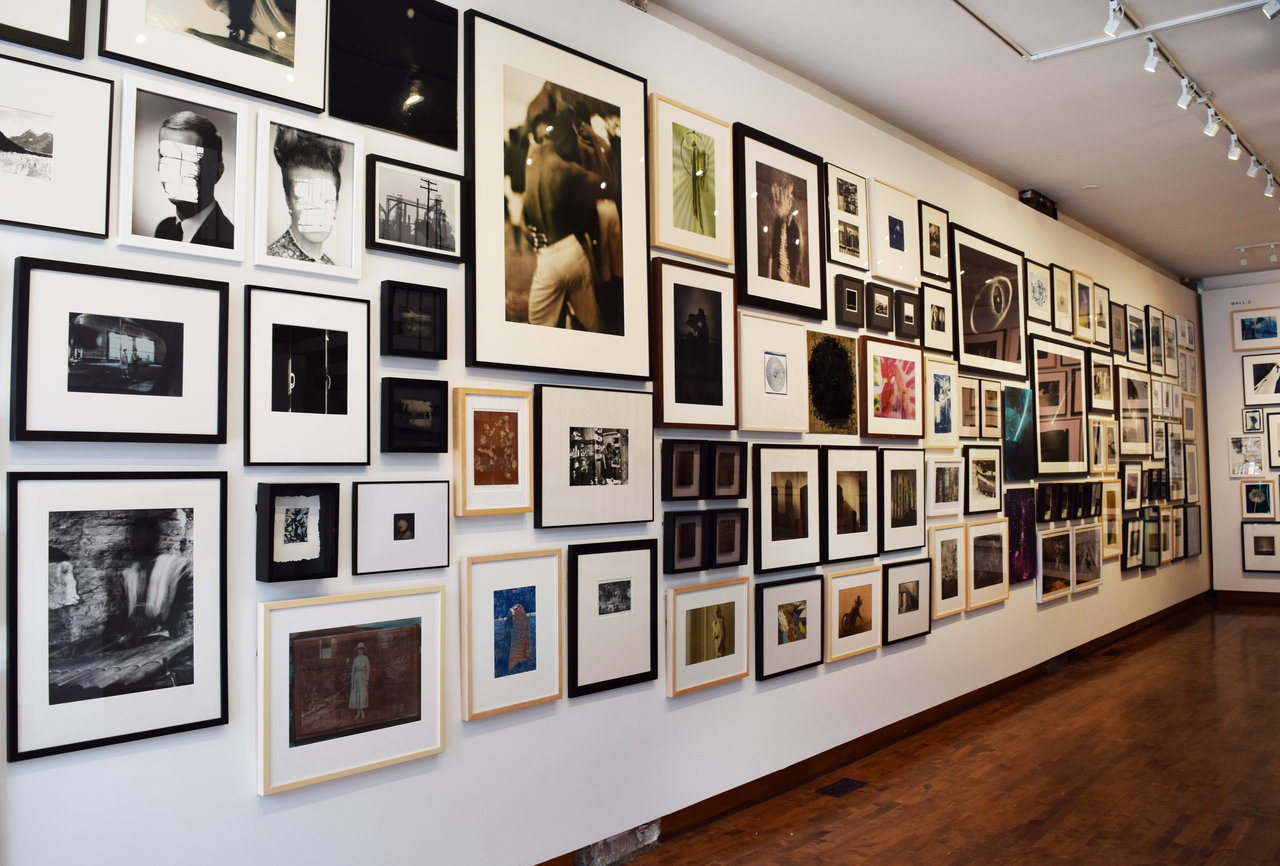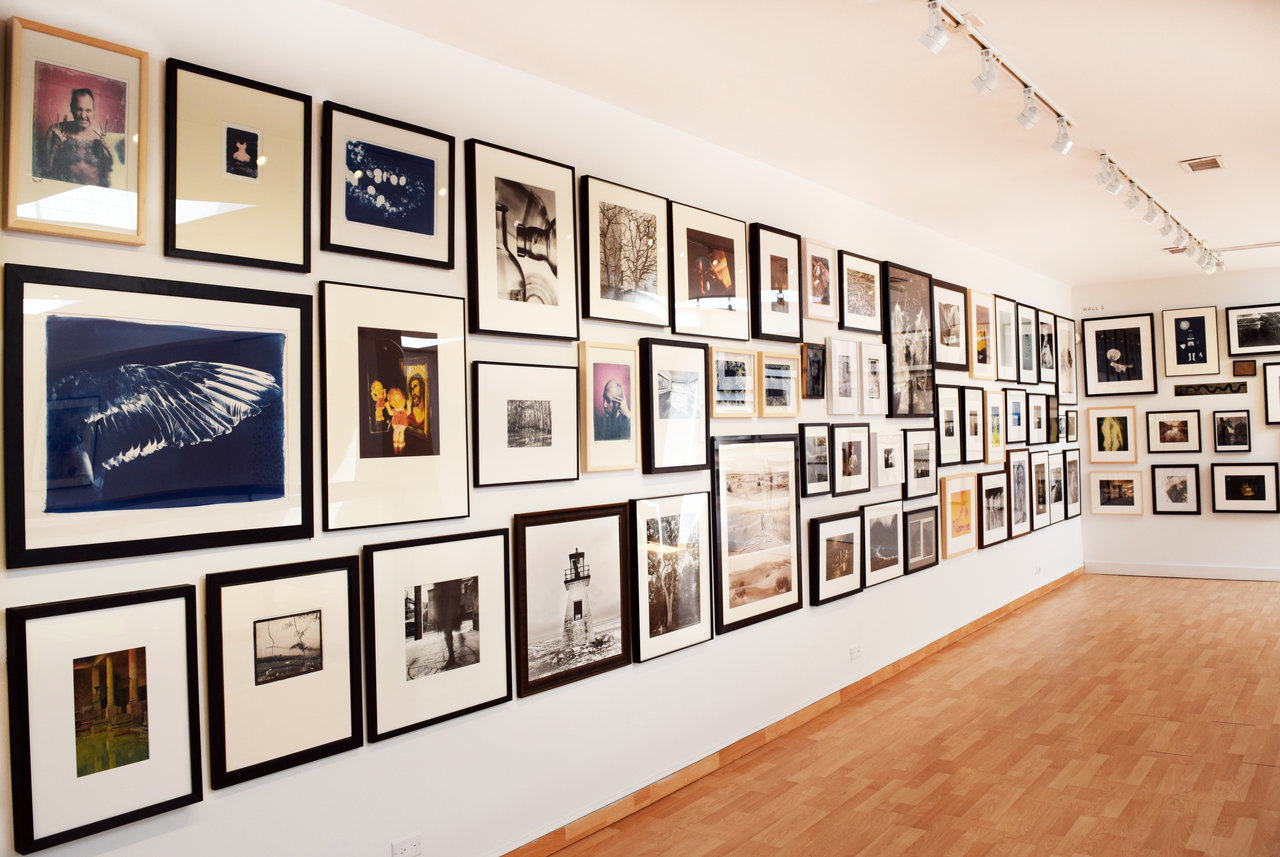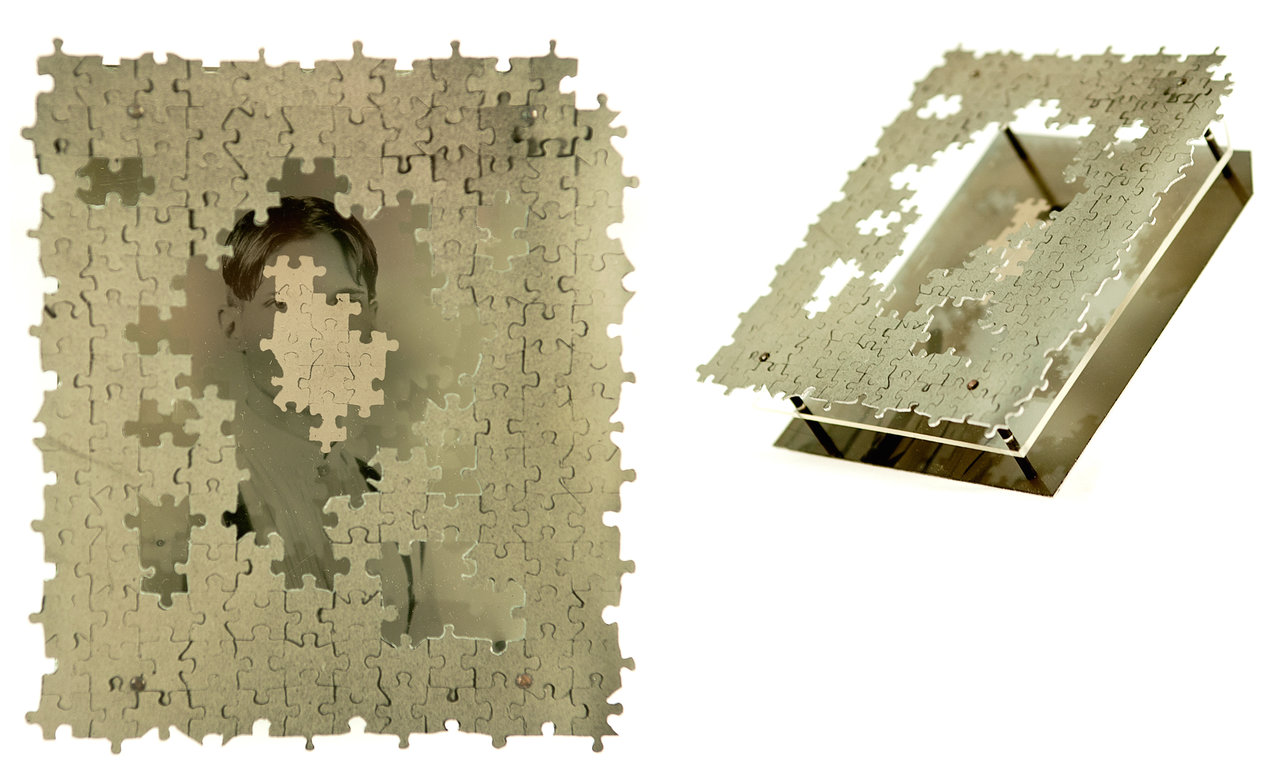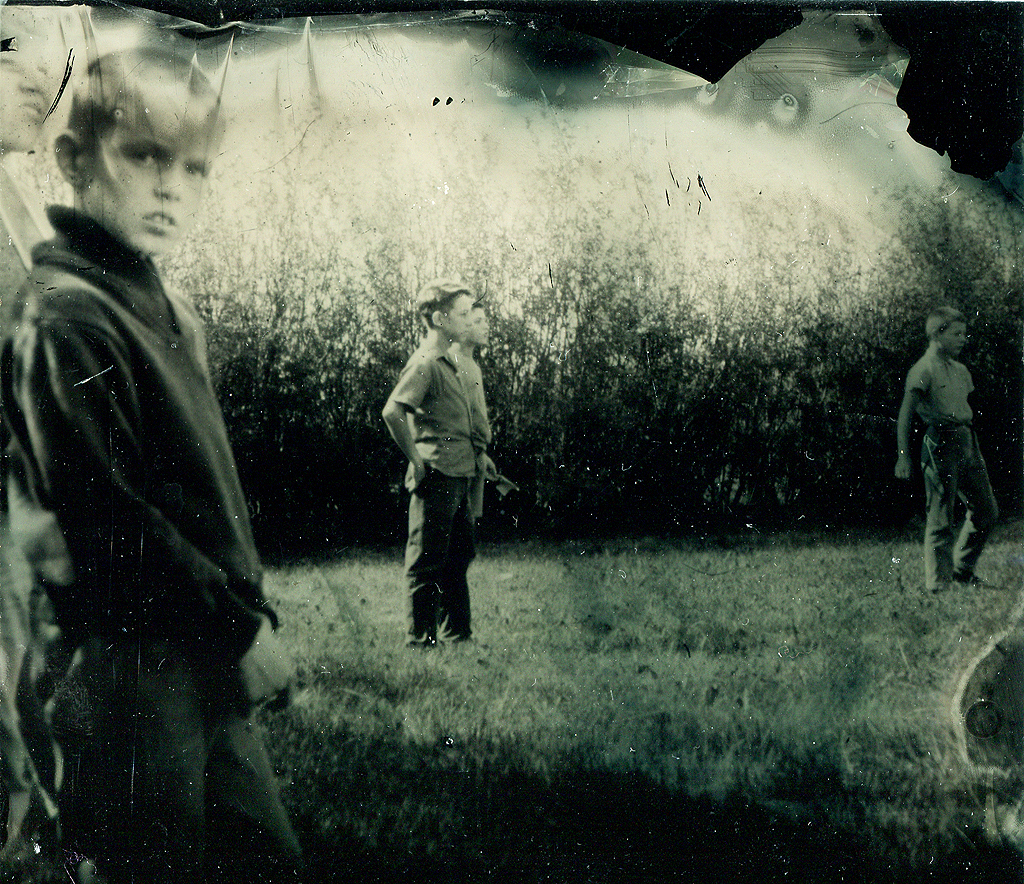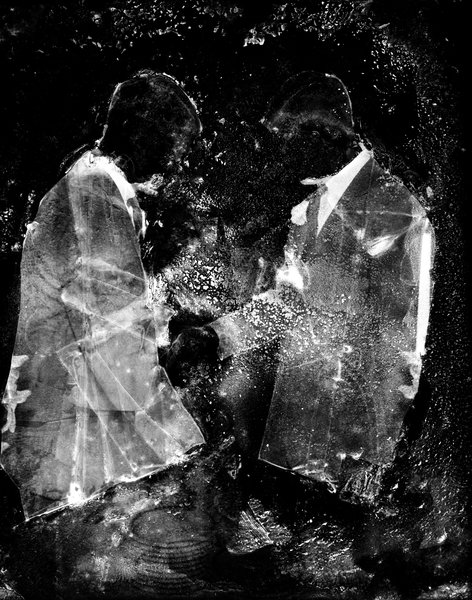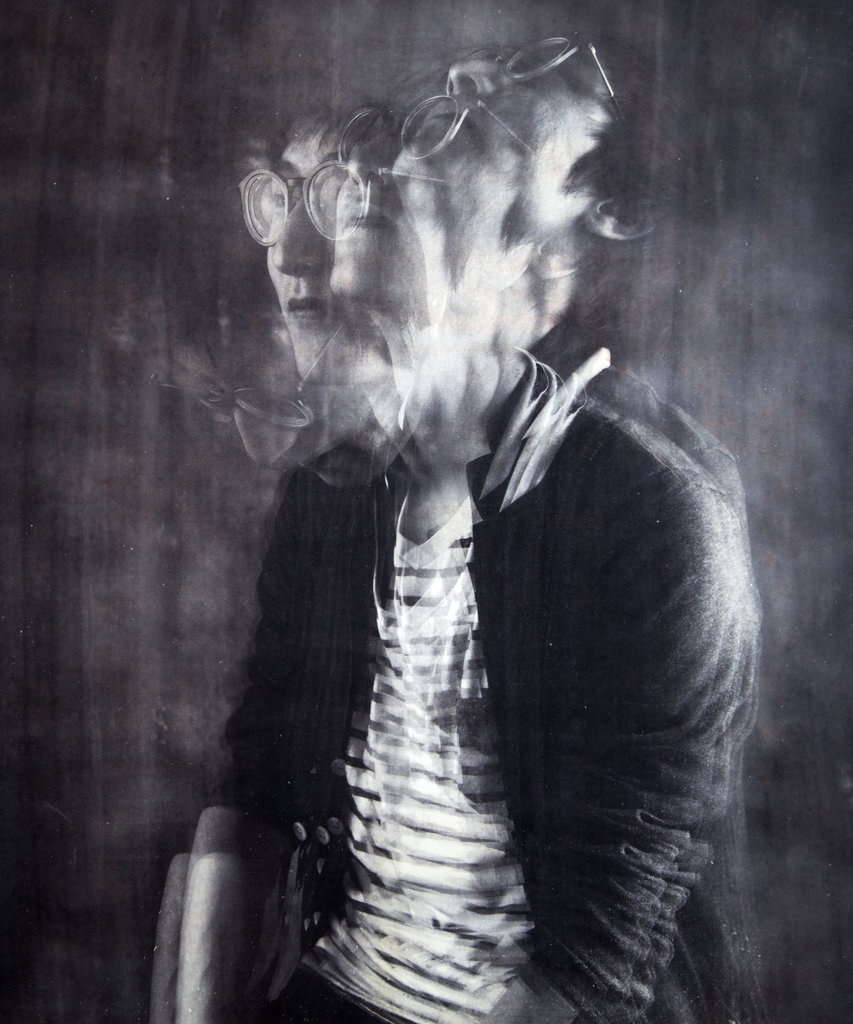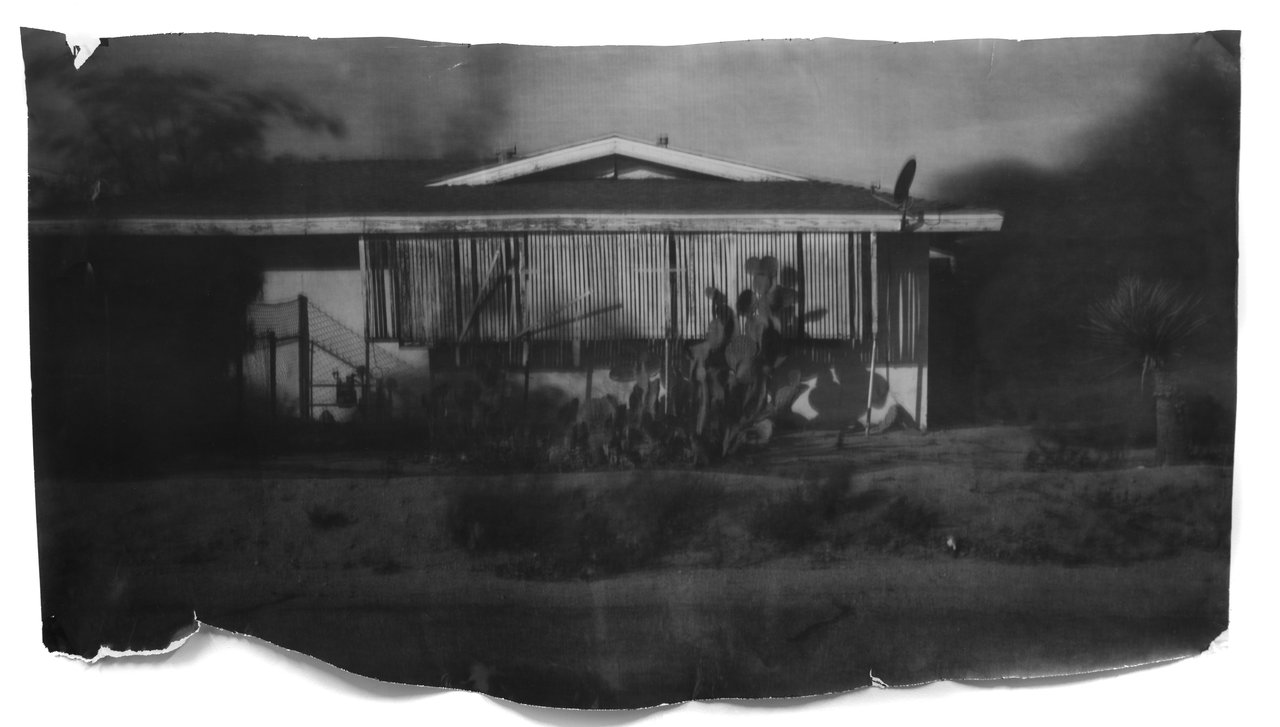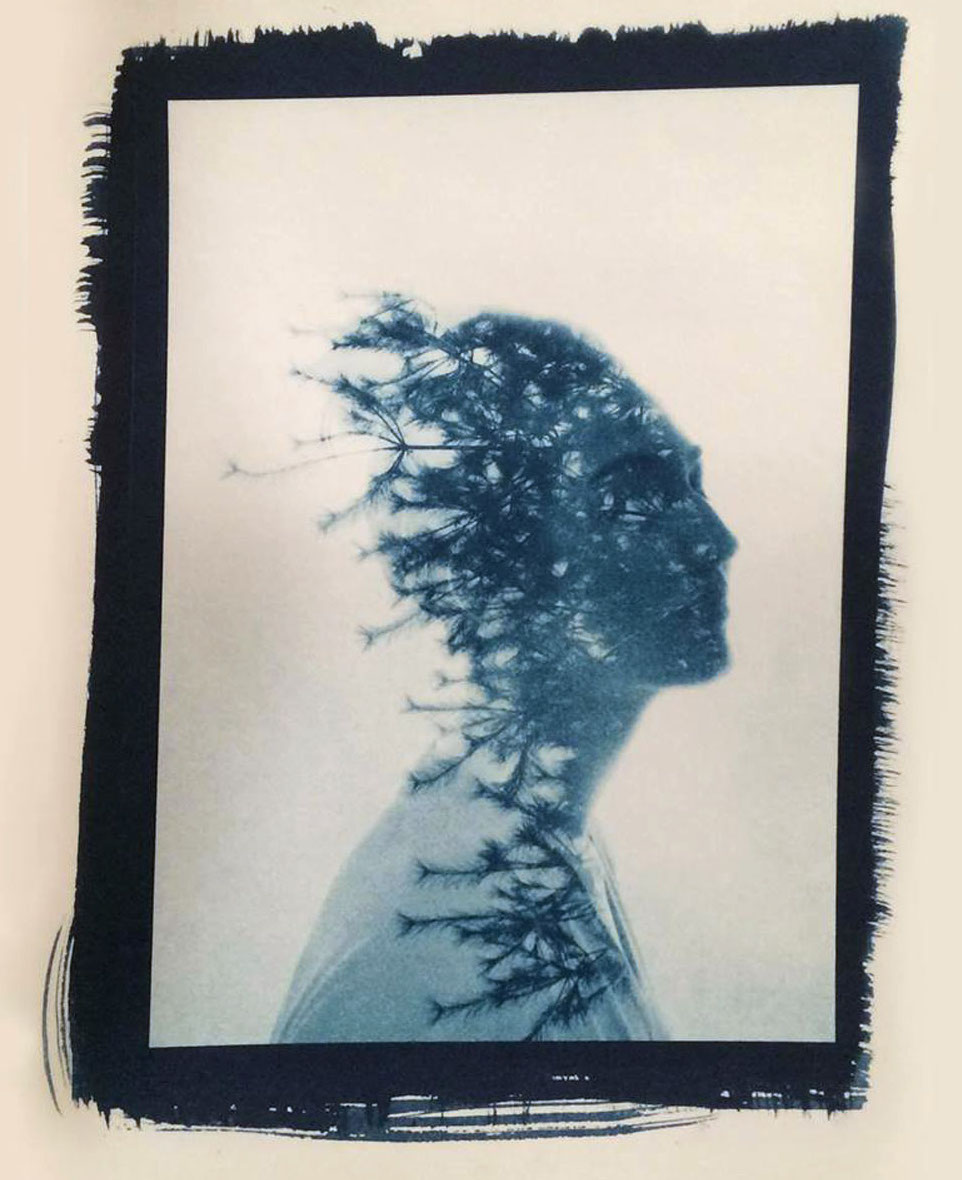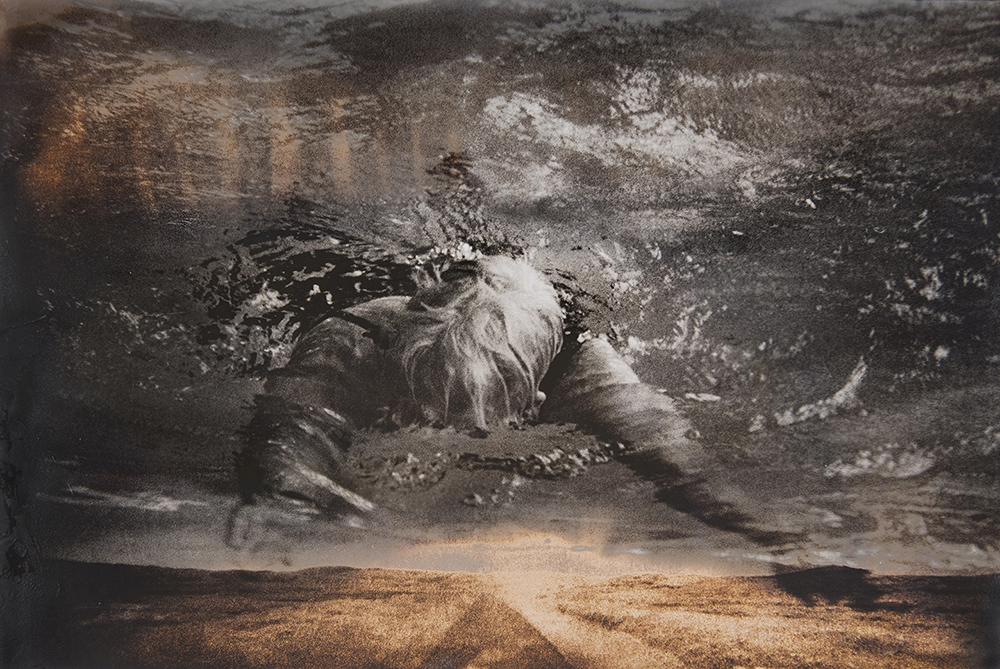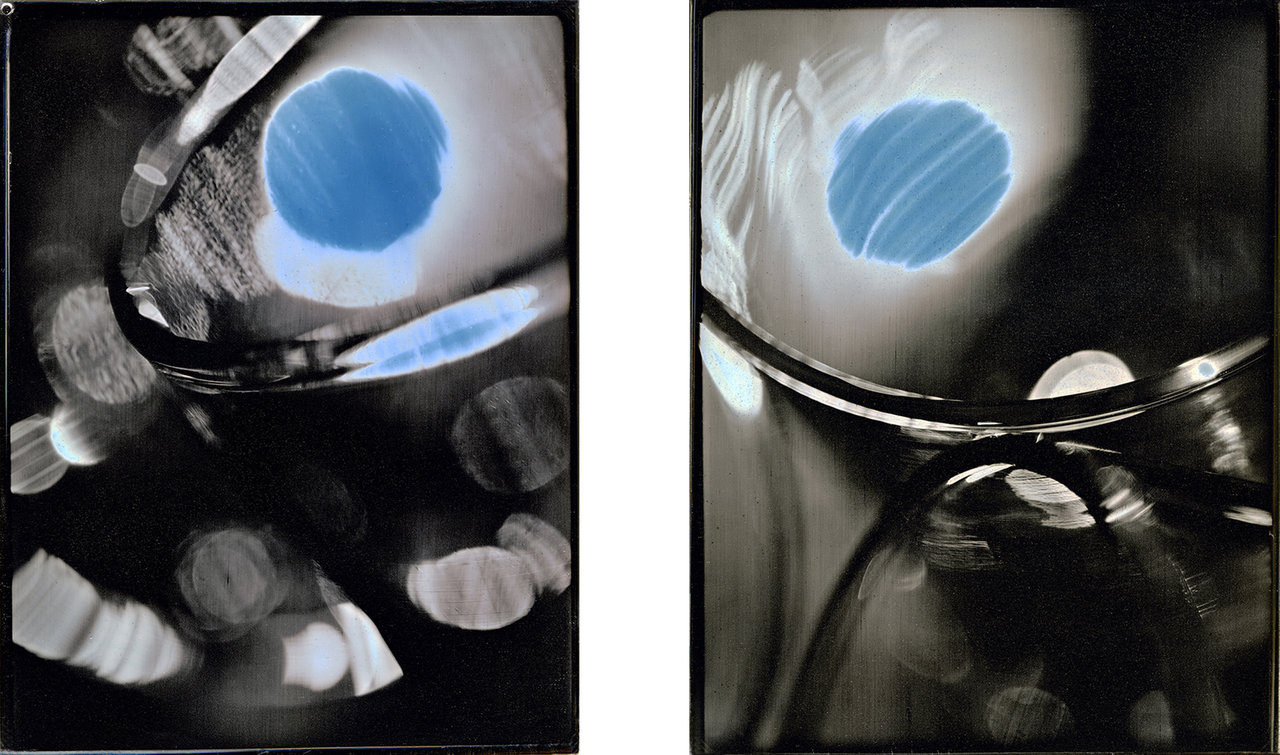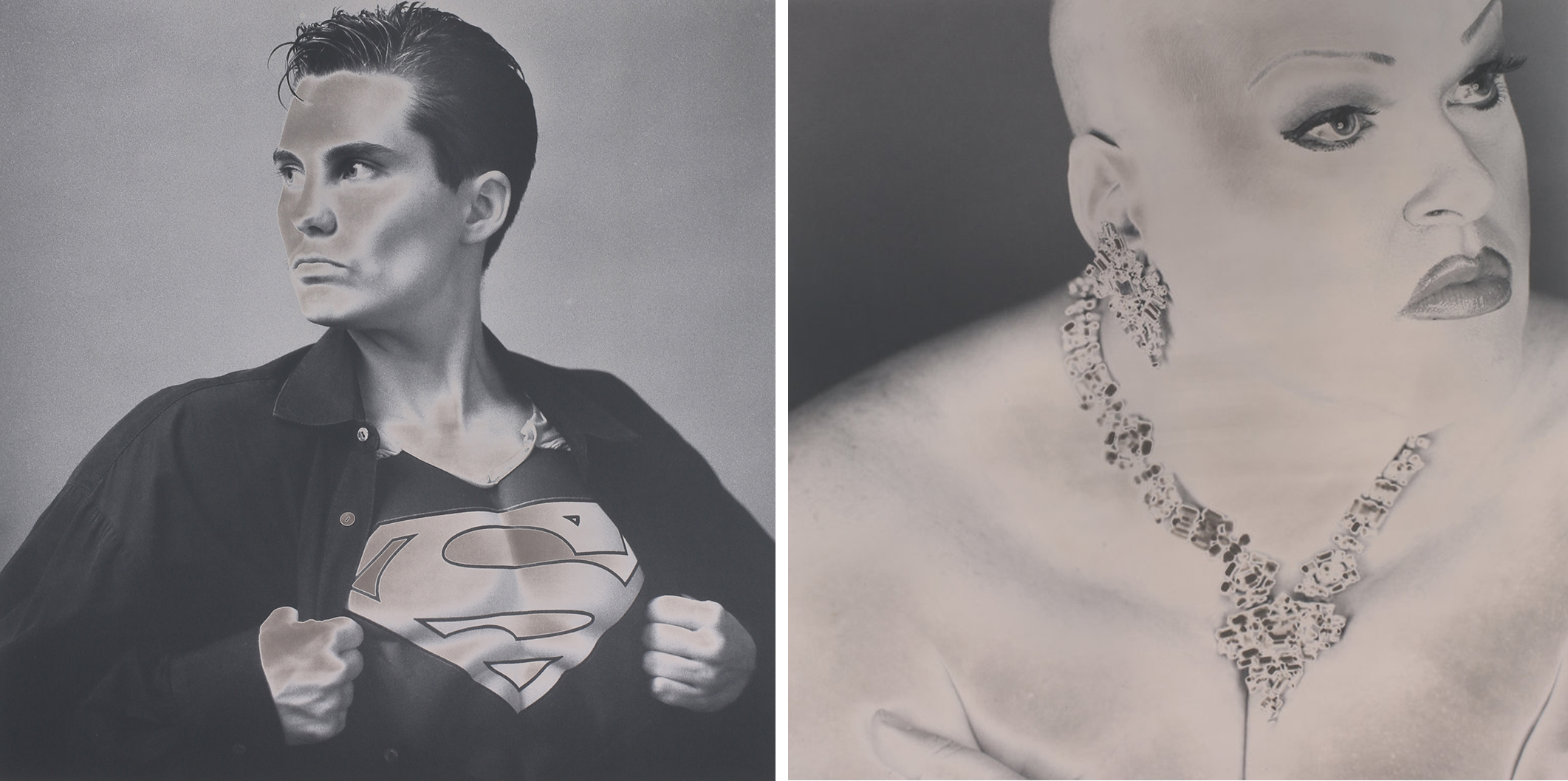RED LIGHT, installation view, Lonsdale Gallery, Main Floor, 2018
RED LIGHT is a very ambitious exhibition displaying 300 photographic pieces, covering the walls of Lonsdale Gallery, salon style, from floor to ceiling. It is a museum size and quality exhibition that would be worth keeping up for a longer time as a showcase for viewers to study the wide range of techniques and enjoy the various thematic approaches in the images. Loosing myself in the richness of this show, having a closer look at the individual pieces, creating narratives for myself and trying to figure out the method used, took a long time and I quickly realized that it would be impossible for me to write a review of this show. I turned to the gallery manager and curator Simone Rojas-Pick for a tour. This is the first time we’ve post a curator’s talk, but I believe this is the best way for us to approach this amazing exhibition. Please enjoy her guided tour, as I did.
RED LIGHT, installation view, Lonsdale Gallery, Main Floor, 2018
The Making of Red Light
Lonsdale Gallery has been around for over 25 years and has often mounted exhibitions dedicated to contemporary photography – specifically focusing on experimental and traditional darkroom processes, including projects with the World Wide Pinhole Association, Alternative Process Photography Symposium.
Last fall when we started to plan for CONTACT 2018, Chad Wolfond, the director of the gallery said that he would love to do a big salon installation in the entire space. As we began to conceptualize the exhibition, we decided to focus on traditional hand-printed darkroom processes. We wanted to not only take people back to this method of image making, but to show how it is being done now in the 21st century.
We reached out to the network of photographers we were already working with. We asked them to introduce us to other artists they know, who were also using these techniques, whose photographs they admired and respected. We also co-operated with Bob Carnie and Carissa Ainslie from Alternative Photo Services and Connections Gallery in Toronto, to tap into other networks of image-makers. In this way we were able to reach out to artists in Canada and all around the world, so the exhibition includes many international artists.
RED LIGHT, installation view, Lonsdale Gallery, Main Floor, 2018
During the development of this project we didn’t want just to focus on what was happening locally in Toronto or within Canada. We were witnessing an exciting movement taking place within the art world: a return to the darkroom and analogue hand printing. The works assembled in this exhibition are only a small snapshot of that larger movement taking place among contemporary artists and recognized by collectors.
We wanted to have a good representation of both young and established photographers and expand the conversation beyond simply presenting historical works. Our focus was to show contemporary photographs that are engaging with, and/or experimenting with, historical processes in distinctively modern ways. So, for me, it was important to include young emerging artists that are doing innovative work with these processes.
We have an incredible team here at the gallery that worked tirelessly for three weeks to mount this huge exhibition. We shared a lot of behind the scenes footage of the installation process on Instagram, and the gallery’s other social media channels.
RED LIGHT, installation view, Lonsdale Gallery, Upper Gallery, 2018
Exhibition Highlights
I like to start my tour with Addison Brown’s (Alabama, US) “Portrait of Eddy Perkins”. Brown is a young photographer from Hunstville, Alabama who is actively working with 19th century processes but doing so in a fresh and exciting way. I find it to be a great entry point for viewers into the concept behind the exhibition. Here, we see a self-portrait of the artist as his ‘alter ego’ Eddy Perkins. In front of the image is a tintype of puzzle pieces that have been painstakingly cut out in the center. Between these layers are individual puzzle pieces that cover and obscure the subject’s face.
Addison J Brown, Portrait of Eddie Perkins, 2016, collodion positives on aluminum, acrylic, and copper, 4.75 x 4 x 1.25 inches
Another great example of young artists using historical processes in exciting and innovative ways, are the works by Heather Fulton (Toronto, Can). She often uses unconventional and inherently destructive materials and processes to explore the vulnerability of memory and the fragility of nostalgia. The exhibition includes ambrotypes, cyanotypes, and silver gelatin prints by Fulton. Her ambrotypes are particularly striking because of the rich material quality of being on black glass. Fulton’s “Be Born, My Dear” is part of a body of work that the artist is currently developing. She uses the wet plate collodion process and an archive of found familial imagery to explore the process of stitching together the roots of familial history, identity and origin.
Heather Fulton, Be Born, My Dear, 2017, ambrotype, wet plate collodion, 8 x 8 inches
Osheen Harruthoonyan (New York, US, Montreal, Can), is a photography-based artist, known for his experimental wet darkroom photographs. Harruthoonyan draws on his rich experience growing up in such diverse countries as Iran, Greece and Canada by employing a multi-faceted approach towards his artistic practice. He works exclusively in black and white film, hand printing fibre-based silver gelatin prints. Using the darkroom as his laboratory, Harruthoonyan manipulates and collages his negatives to construct his multifaceted photo-based compositions that explore the intersection between memory, history, and the deconstructive process of time. For him, photography is not about documentation, but a mode of personal expression.
Osheen Harruthoonyan, Transference, 2008, sepia selenium split toned gelatin silver print, 36.75 x 29.5 inches
Brian Culbertson (North Carolina, US) fuses historical processes with experiential techniques, creating haunting portraits. Subjects are depicted through multiple exposures to create a surreal effect. Culbertson uses the historic salted paper technique but replaces the salts with medication used to treat anxiety, which produce unpredictable shifts in color and tonal range. The incorporation of medications used to alter the chemistry of the mind into the salted paper print process produces images that are unsettling and, in some cases, unstable. The pieces in this exhibition are from Culbertson MFA thesis work that focused on the prevalence of prescription medications in the treatment of mental illness and the history of photography’s role in the representation of those living with it.
Brian James Culbertson, Lightheaded, 2017, salted paper print, 30 x 33 inches
In 2010, Bella Klein (New York, US) and Daniel Paterson (Toronto, Can) converted a utility trailer into a mobile pinhole camera obscura. The duo took their Trailer Obscura on the road throughout the Unites States and Canada. Their Kerouac-ian inspired adventure simultaneously engages with the photographic road trip tradition, the North American landscape, and the history of the medium. Klein and Paterson go inside the lens-less camera together and fix the ephemeral light projection onto the paper, transforming the fleeting image into a photographic object. These images visually reveal their process through rips, scratches, blurring, colour casts, light leaks, and distortion. The paper negatives are shown as final mono prints.
Daniel Paterson & Bella Klein, House Joshua Tree, CA, 2016, silver gelatin monoprint, 38 x 60 inches
Nicole Cudzilo’s (New York, US) “Pines” is a double exposure cyanotype. Here the artist overlays a self-portrait with the image of pine trees in a very painterly and rich way. She often places figures within a landscape, using their relationship with the environment to create a narrative.
Nicole Cudzilo, Pines, 2015, cyanotype, 8 x 10 inches
Anne Campbell (Aberdeenshire, Scotland) teaches analog photography at Gray’s School of Art. Her practice is rooted in alternative darkroom techniques. Campbell’s “Within Reach” is an exciting example of some of the hybrid experimental processes included in the exhibition. She uses infrared film, double negatives, mordançage, and lith printing. The combination of these processes creates highly unique images that are very textural and remind us of film stills.
Anne Campbell, Within Reach, 2017, infrared film, double negatives, mordancage lith print, 19.75 x 26 inches
William Mokrynski (London, England) is interested in seemingly obsolete photographic negatives culled from vernacular and professional archives from the 1950/60’s – during the height of the Cold War. The identity of the sitters, and context of the portraits has been lost. While printing, the surface of the photographic paper is masked, clouding the visual identity of the sitters. The final works are not clear views of figures from the past, but a visually striking and almost haunting cast of characters plucked from the pages of fiction. Conflating fiction with reality, Mokrynski deliberately makes a connection between the Cold War and our current climate of political paranoia, geopolitical unrest, and surveillance to communicate a general sense of unease about the current world order.
William Mokrynski, Cousin and Neighbours Series, 2015, fiber-based gelatin silver prints, 16 x 12 inches each
Jerry Spagnoli (New York, US) is one of the world’s most renown contemporary daguerreotypists. He has been attributed with reinventing this 19th century technique, the first photographic process invented in 1839, using a distinctively contemporary sensibility. Spanoli’s still lifes of glasses play with the highly reflective surface of the daguerreotypes. As a viewer, you are not sure if what you are seeing is a reflection of the glasses above or below. The only visual anchor is the distinctive blue tone that is produced by deliberately overexposing the photographs during the development process. For the artist, the precision of the daguerreotype becomes a vehicle for questioning photography’s intrinsic objectivity and the way in which the mind analyzes the world as a surface.
Jerry Spagnoli, Glass Series, 2017, daguerreotypes, 4.25 x 5.5 inches each
Kevin Kelly (Toronto, Canada) solarized photographs, an experimental technique made famous by Man Ray, give a distinctively contemporary flavour to the tradition of portraiture. The images on view are part of his Gender series, depicting drag kings and queens. In “Super Chris” and “Candice in Jewels” the subjects are powerful figures with no attempt to fetishize them. What makes Kelly’s pieces so exciting is the use of solarization to draw the viewer’s eye in, a process that naturally demands looking closer at the image because the values of light and dark are inverted – underscoring the idea that gender and identity is not fixed, but fluid.
Kevin Kelly, Super Chris (left) and Candice in Jewels (right), 2015, toned gelatin silver print, 25.25 x 26.5 inches each
When visiting this exhibition viewers usually spent one or two hours, finding their own favourites. They often come back with friends to share this unique experience. The gallery has also organized additional programming for the weekends, the last one of them on Saturday June 23, is a talk, titled Experimental Photography: Alchemy & the Darkroom.
Images are courtesy of Lonsdale Gallery
*Exhibition Information: Group show, May 2 – June 29, 2018, Lonsdale Gallery, 410 Spadina Road, Toronto. Gallery hours: Wed–Sun 11 am – 5 pm.
** Part of Scotiabank CONTACT Photography Festival

